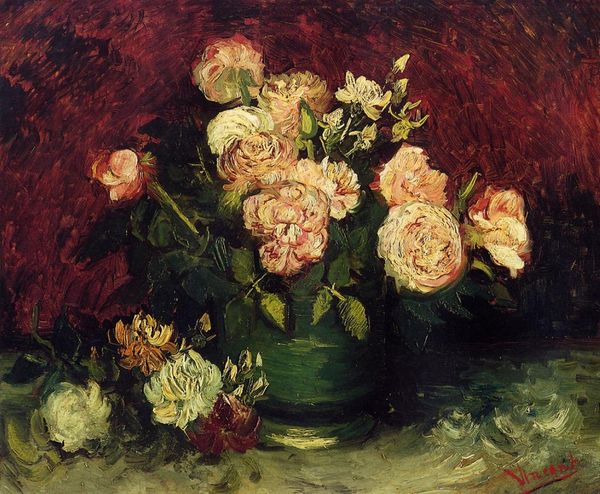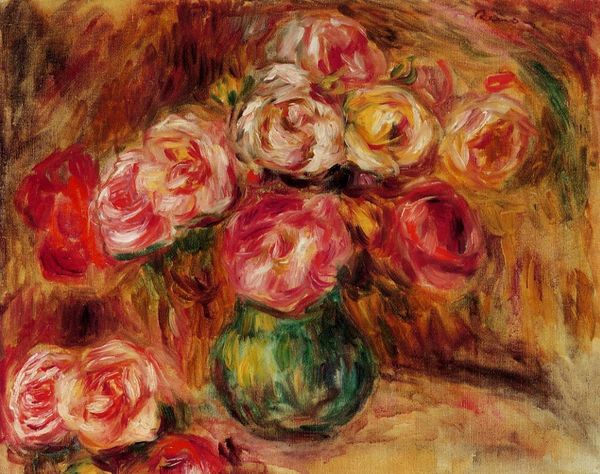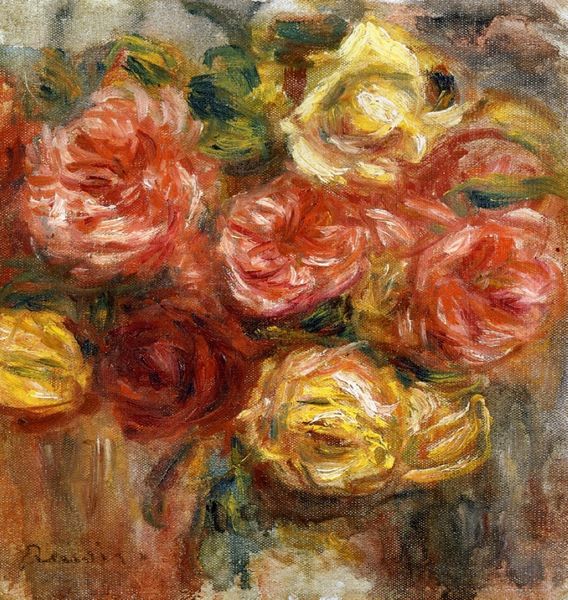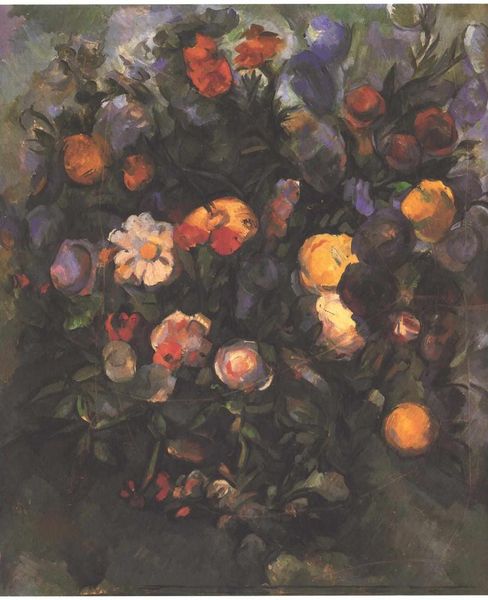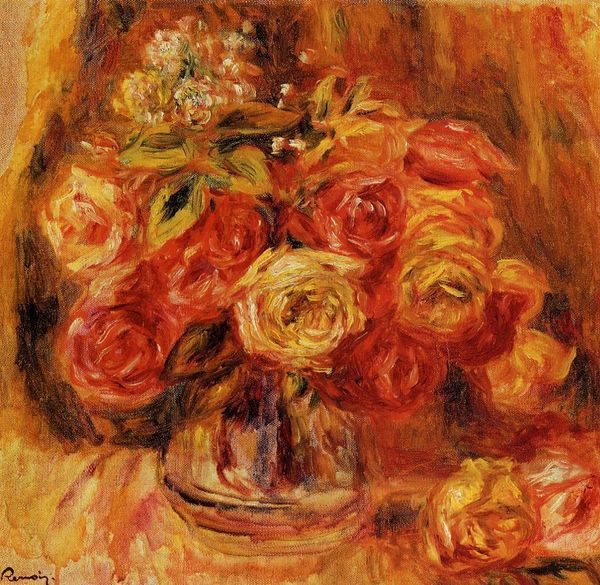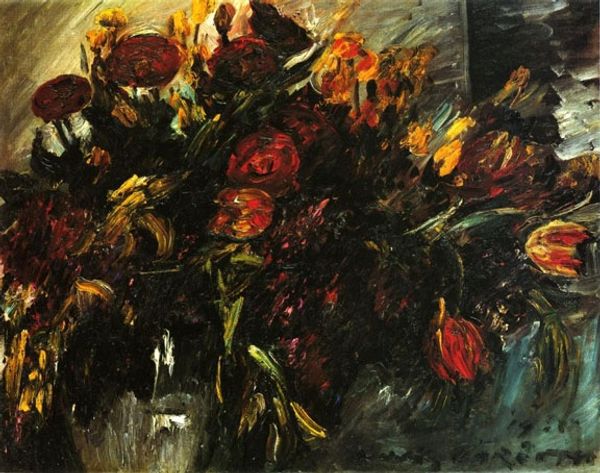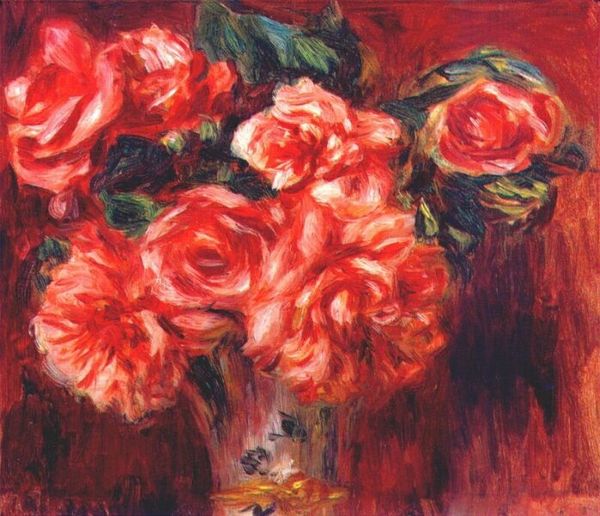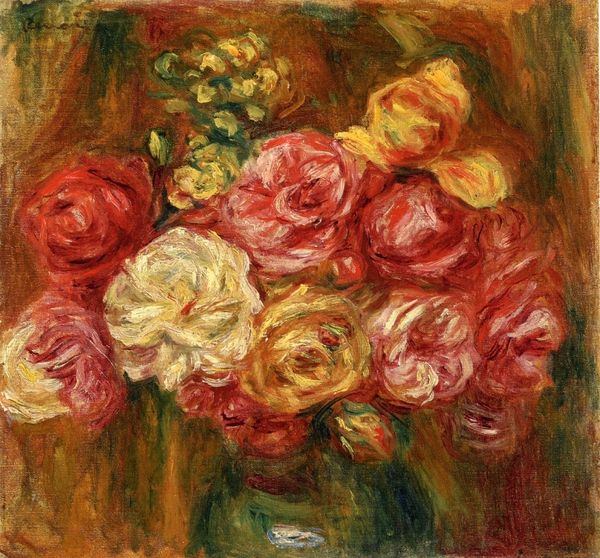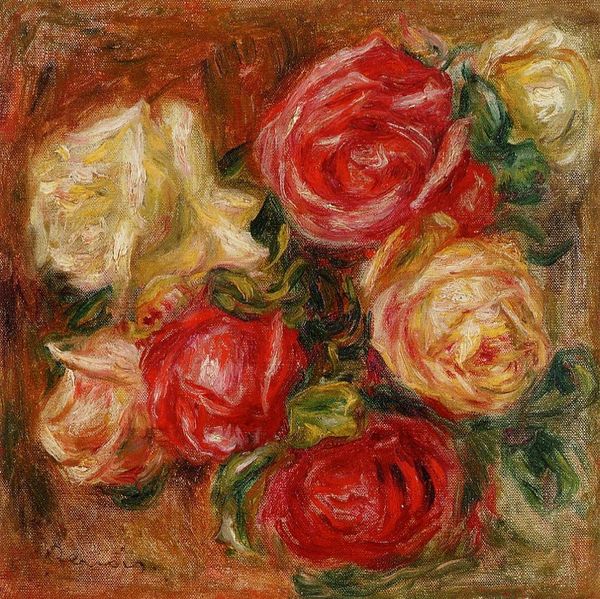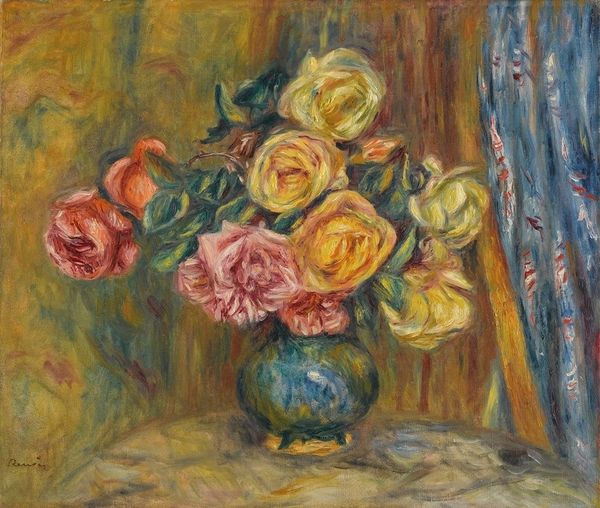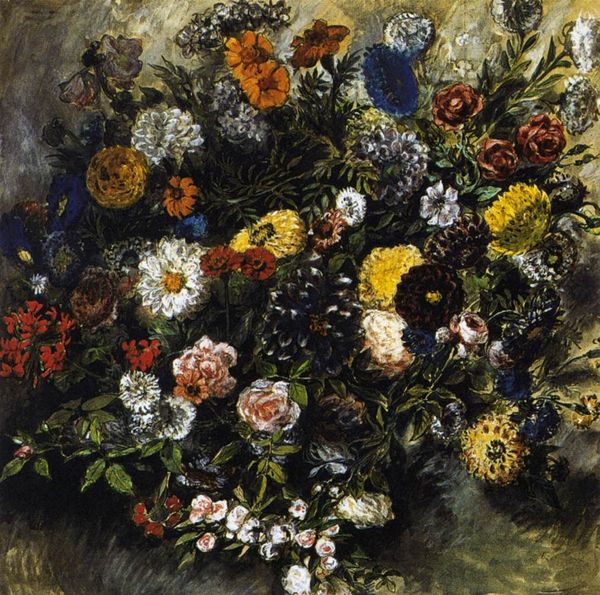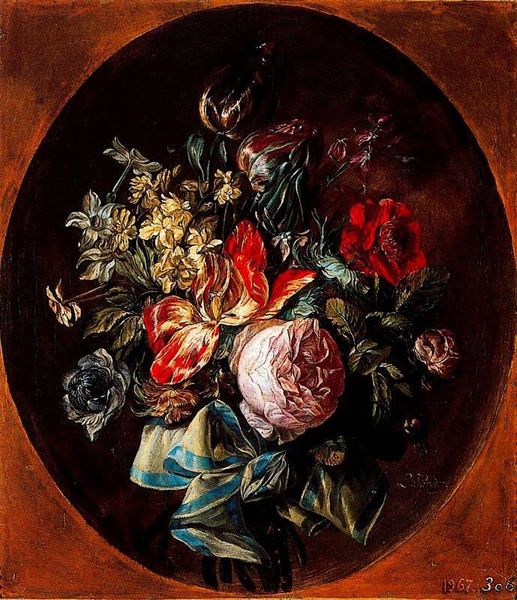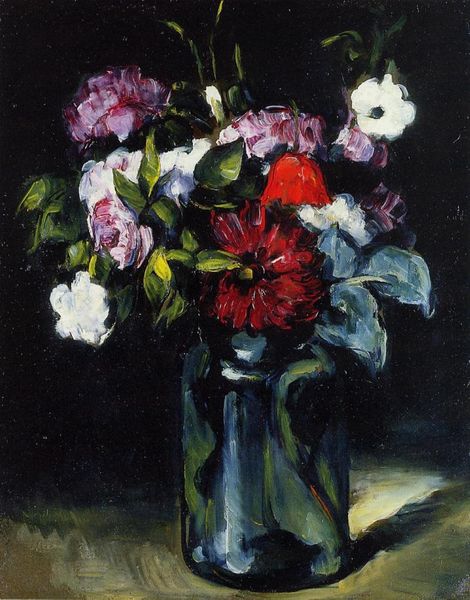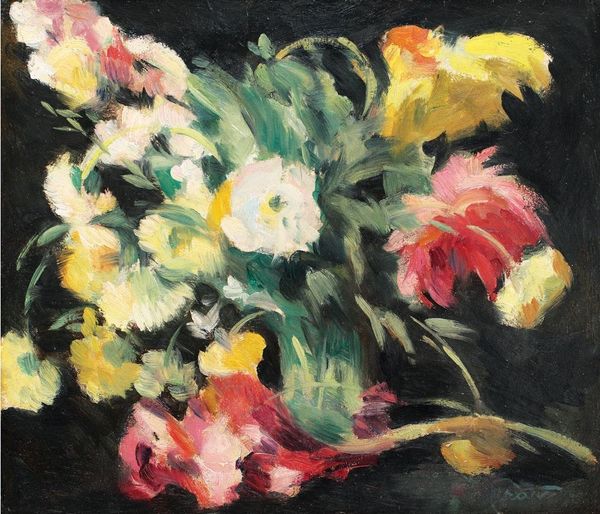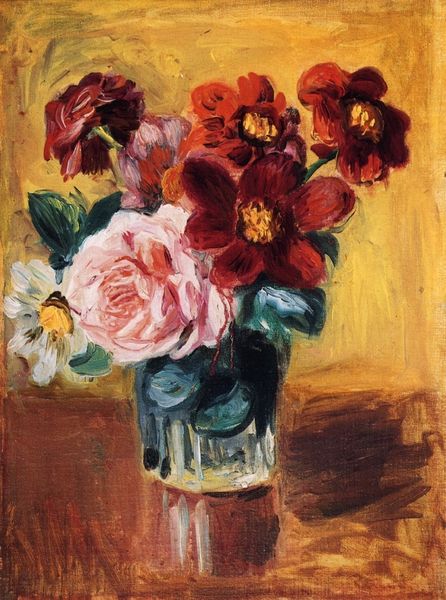
Copyright: Public domain
Editor: Here we have "Roses," an oil on canvas still life created by Henri Fantin-Latour in 1881. It's… well, it’s very yellow! Almost overwhelmingly so. What are your thoughts on this particular work? Curator: What strikes me immediately is how Fantin-Latour situates these blooms within a lineage of representation, while subtly subverting it. The 19th century witnessed the rise of the bourgeoisie and their consumption patterns. Still life painting, particularly floral arrangements, became symbols of domesticity and refined taste. What's your take on how gender dynamics are working in this painting, particularly thinking about the associations of flowers and femininity? Editor: That’s a great point, the roses feel inherently feminine, almost stereotypical. Are you suggesting there’s more than meets the eye here? Curator: Absolutely! Consider the socio-political climate. While these images reinforced certain gender roles, women were actively challenging them. These weren’t just pretty pictures, but also subtle affirmations of the female gaze, created and consumed by women who navigated complex societal expectations. Think about the Impressionist Berthe Morisot or Mary Cassatt, exhibiting alongside their male counterparts, defying traditional roles through their very participation in the art world. How do you think the color choices contribute to that narrative, if at all? Editor: Hmm. The yellow is unexpected, almost defiant against what I expect a "romantic" painting to be. Maybe it's not so passive after all. Curator: Exactly! Fantin-Latour uses this seemingly conventional subject to engage with broader social discourses about class, gender, and the changing role of women in society. We cannot look at "Roses" divorced from these critical perspectives. Editor: I never would have considered all those layers just looking at the pretty flowers. It really adds another dimension to the experience! Curator: Indeed. Seeing beyond the surface opens up new dialogues and expands our appreciation for art’s complex relationship with culture.
Comments
No comments
Be the first to comment and join the conversation on the ultimate creative platform.
